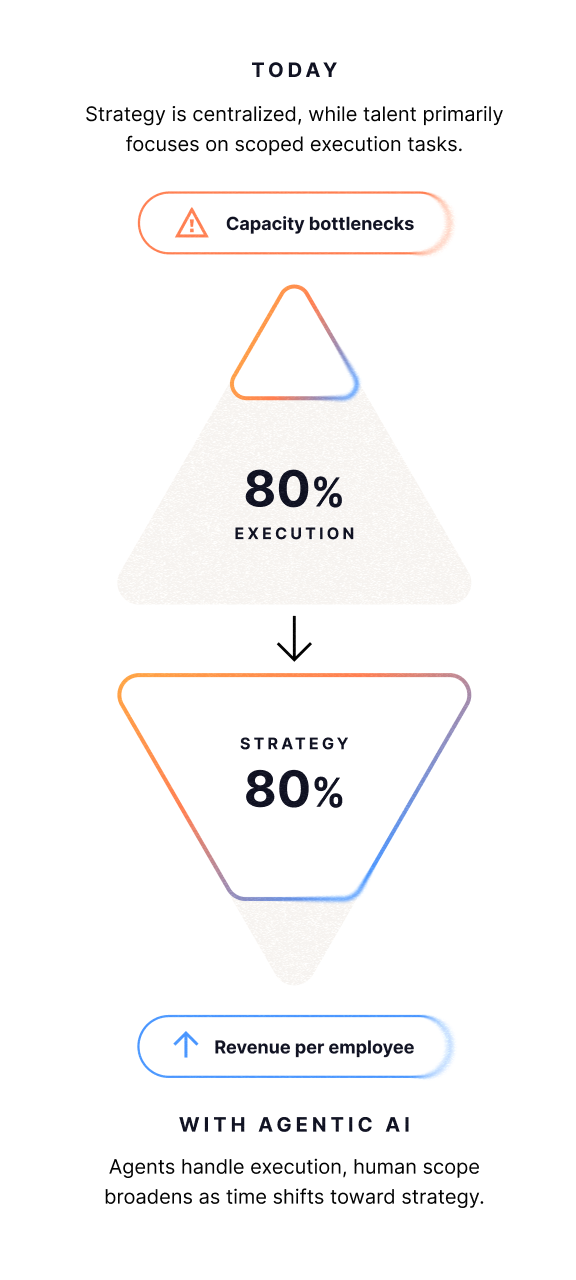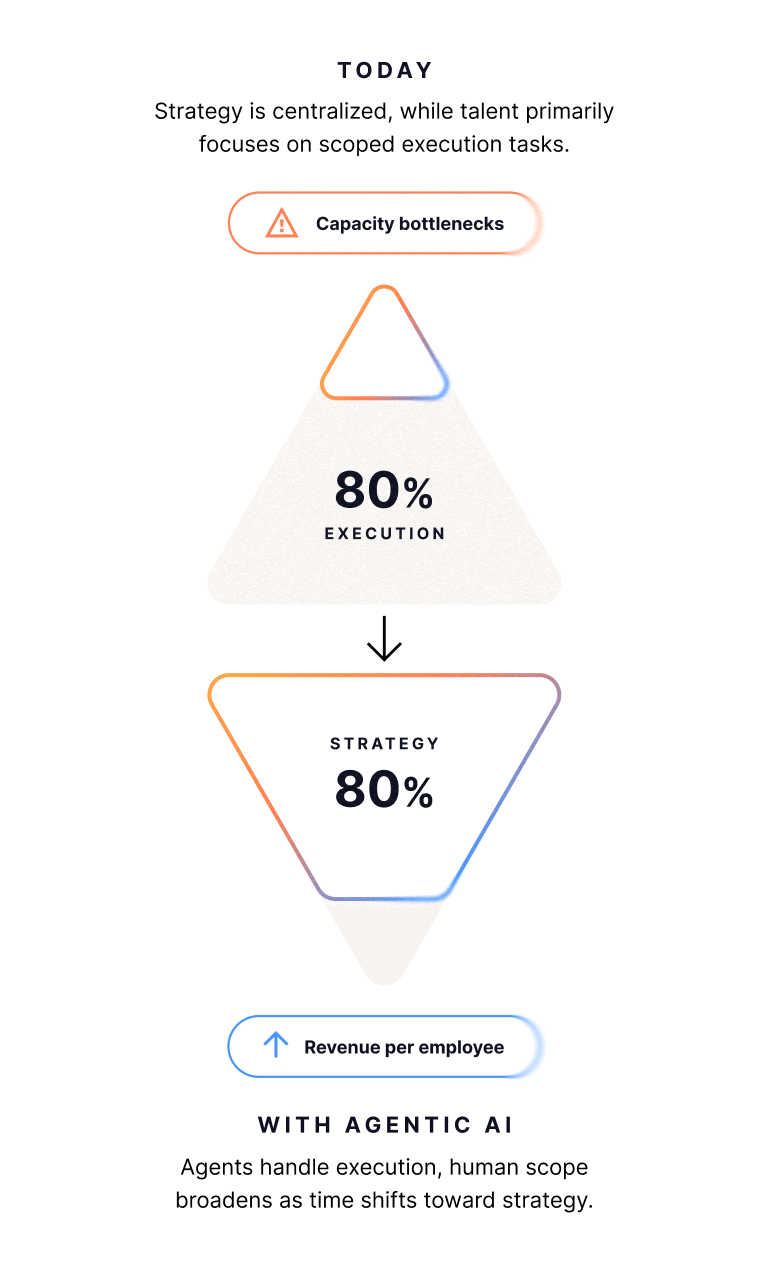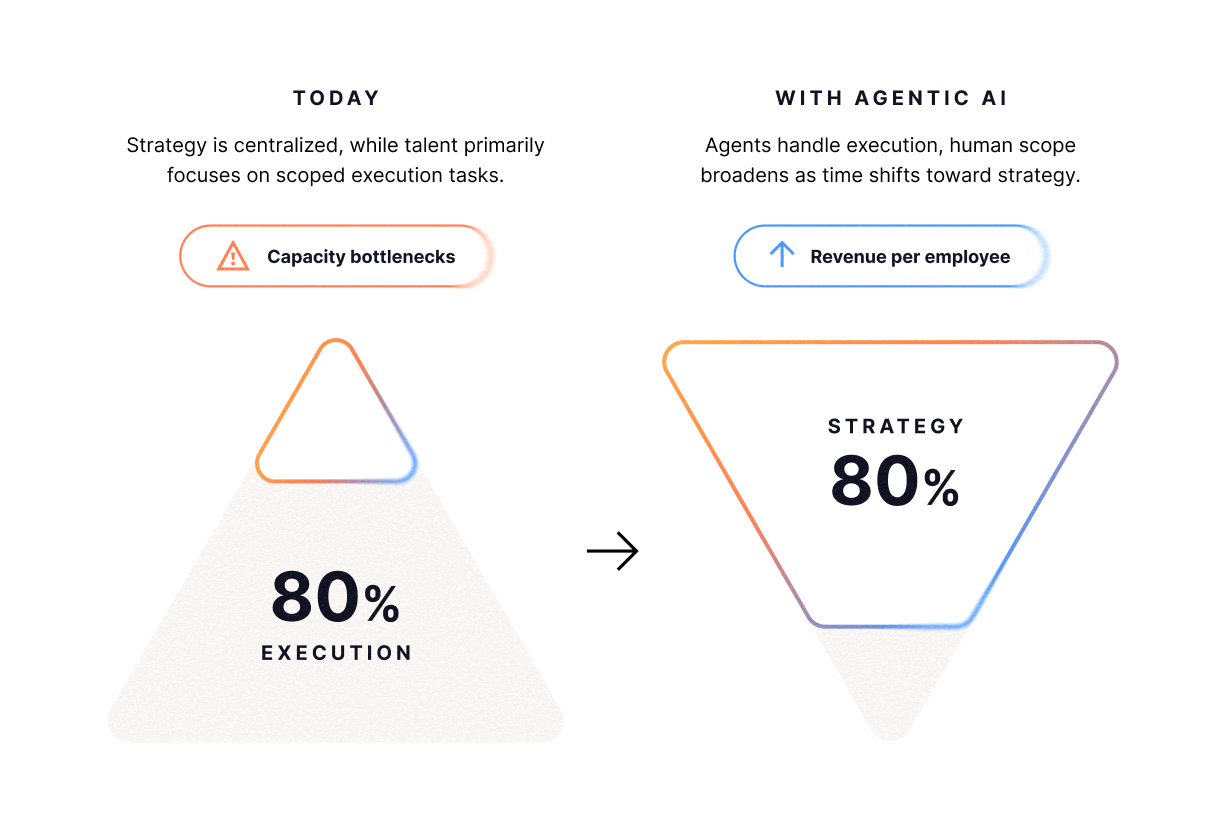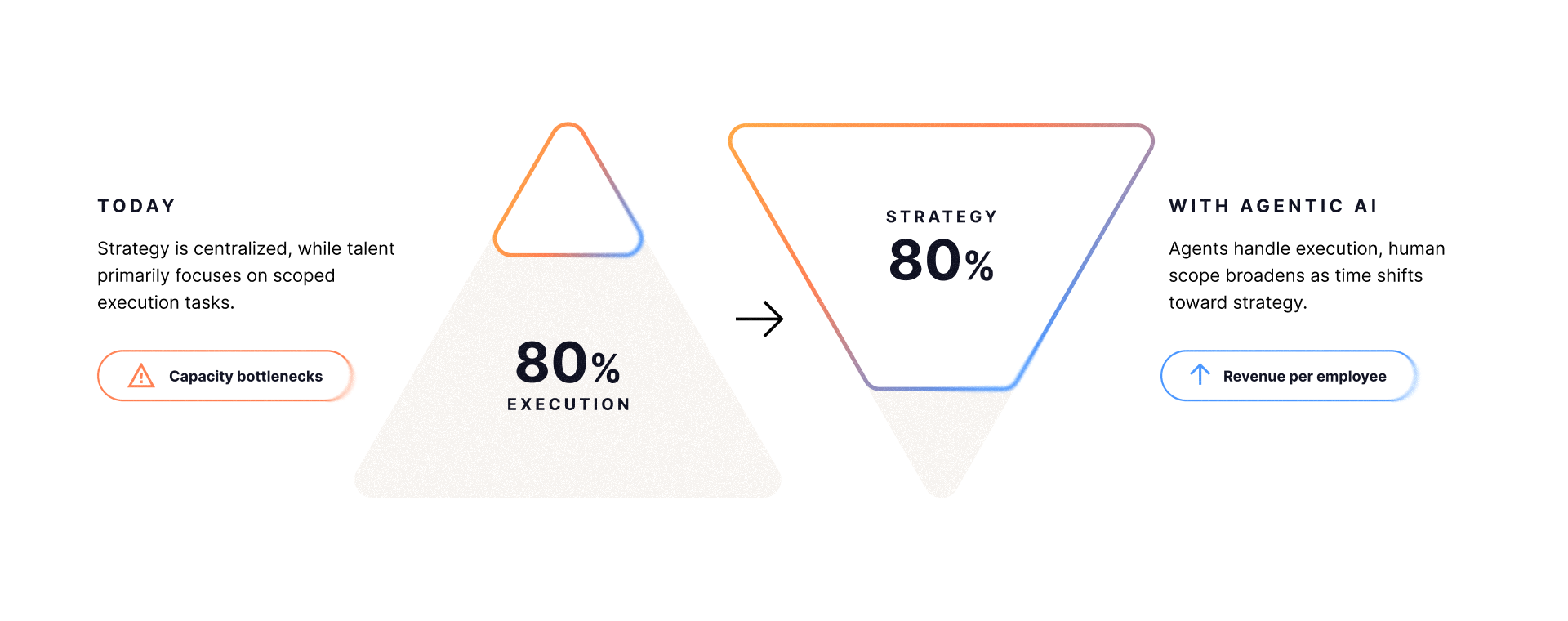Reshaping the workforce and your company for an agentic AI future
DXC is seeing this approach work, firsthand: When we partnered with 7AI to bring agentic AI into our security operations center (SOC), we built Minimum Viable Products (MVPs) to test things out and learn what worked. Once proven, we scaled with speed and precision, empowering the SOC team to focus on higher-value work. By cutting investigation times by 67.5% and reclaiming 224,000 analyst hours, agentic AI created opportunities for the team to build new capabilities and drive innovation where it counts.
This level of transformation demands new thinking from leaders. Organizations that succeed know when to automate and when to elevate human capabilities. They embrace what DXC calls "good friction” — moments where human insight, judgment, and collaboration create value that AI cannot deliver alone.
To understand what's possible when AI becomes a true collaborator, leaders should start with these questions:
How do we redesign work when AI handles the routine?
AI transformation begins with automating repetitive tasks, but the work doesn't stop there. The real impact comes when organizations enhance what humans can do.
Take security analysts at DXC's security operations center, for example. Agentic AI now handles entry-level work — classifying alerts and documenting findings — while analysts dedicate their expertise to complex investigations and fine-tuning systems to catch emerging cyberattacks.
In addition, these analysts are now implementing agentic SOC solutions for DXC's global clients, taking their hard-won expertise to organizations just starting their AI journey. Automation created the space for genuine career elevation.
This pattern of transformation is accelerating across industries. The question is no longer whether AI will reshape work, but whether organizations can move fast enough to capture the advantage that comes from preparing their people for it.
The scale of change may sound daunting, but it's not unprecedented. When electricity and the internal combustion engine reshaped work in the early 20th century, roughly 40% of agricultural jobs transformed – and society adapted, creating new industries and job opportunities that previous generations couldn't have imagined.
Today's AI transformation shows a similar pattern. DXC's global survey of 2,496 business leaders found that among those with high visibility into workforce planning, the vast majority are taking action: 86% will use AI to shift job responsibilities, 89% will create new roles to manage and optimize AI systems, and 87% are actively retraining staff to work alongside AI.
What skills will separate high performers in this new environment?
High performers will excel where AI can't, such as in judgment calls, relationship building, and intricate work that calls for human oversight. This matters especially in industries like insurance, where certain situations require empathy and nuanced understanding only humans can provide.
When regulators ask, How did you make that decision?, insurance organizations relying on agentic AI will need humans who can explain the reasoning, understand the underlying algorithms, and take accountability.
This need for human judgment extends beyond compliance. While agentic AI can speed up claims and sharpen risk assessment, insurance agents and brokers remain essential. They help customers navigate complex products, personalize coverage, and feel supported during life's big moments.
Managers need new skills, too. According to DXC’s global survey, business leaders ranked lack of AI leadership and strategy alignment as the second-biggest challenge to implementing AI solutions — just behind integration difficulties with legacy systems. Managers are not just leading people anymore — they're orchestrating collaboration between humans and agentic AI. As these systems take on more responsibility, effective leaders must guide both to ensure AI delivers value without losing the human touch.
How do we invest today's efficiency gains into tomorrow's competitive advantages?
Anyone who has led a team through change knows resistance is inevitable. What differentiates effective leaders is their ability to show a clear path to results.
With agentic AI, that path starts small. DXC has helped insurance organizations find success through targeted implementations — using Smart Apps, which tackle specific business processes and deliver quick wins teams can take to leadership as proof to invest more. When colleagues see AI making their jobs easier, they become advocates.
This shift unlocks bigger opportunities. With AI handling routine work, organizations can redirect human talent toward higher-value activities that create competitive advantage, such as designing new products and providing ethical oversight of AI systems to ensure fairness and compliance with evolving regulations. Organizations with a clear path forward don't just automate faster. They innovate differently.
The bottom line
AI will automate countless tasks in the years ahead. But the organizations that thrive will be those that answer a harder question: What do we want our people to become?
In 1956, GE founded Crotonville to develop leaders at scale. As agentic AI reshapes work, organizations need that same level of commitment — not to teach people how to use AI, but to help them discover where they add value that AI cannot. In five years, your competitors won't be the ones with the most advanced AI. They'll be the ones whose people know how to make AI more valuable, and who built careers they couldn't have imagined before AI arrived.
The technology is ready. The real work is deciding what kind of workforce, and what kind of company you're building.
Dan Gray leads global technical operations for 45,000+ technology professionals at DXC Technology, modernizing service delivery and driving operational confidence through the intelligent adoption of Human+ AI.






















